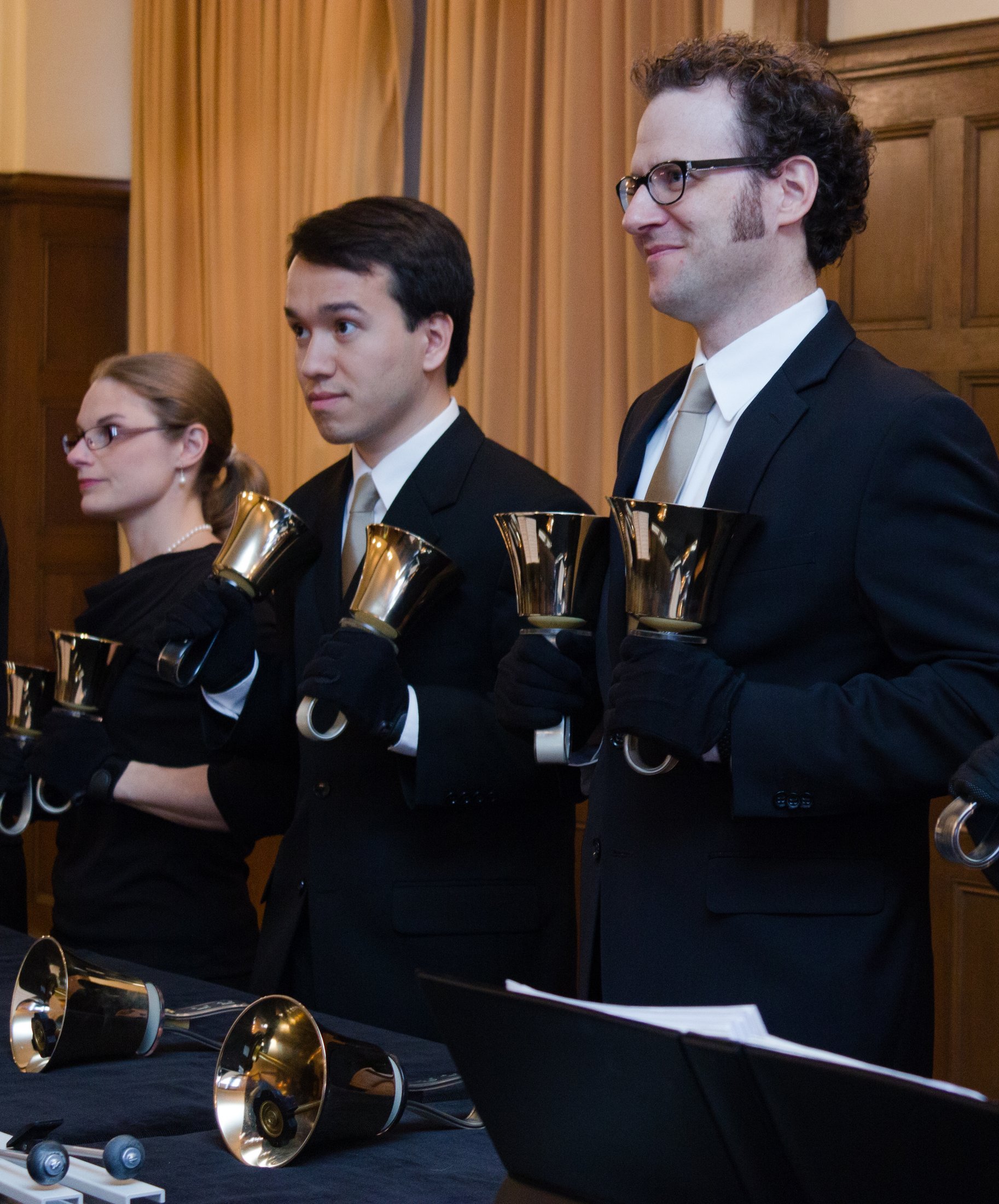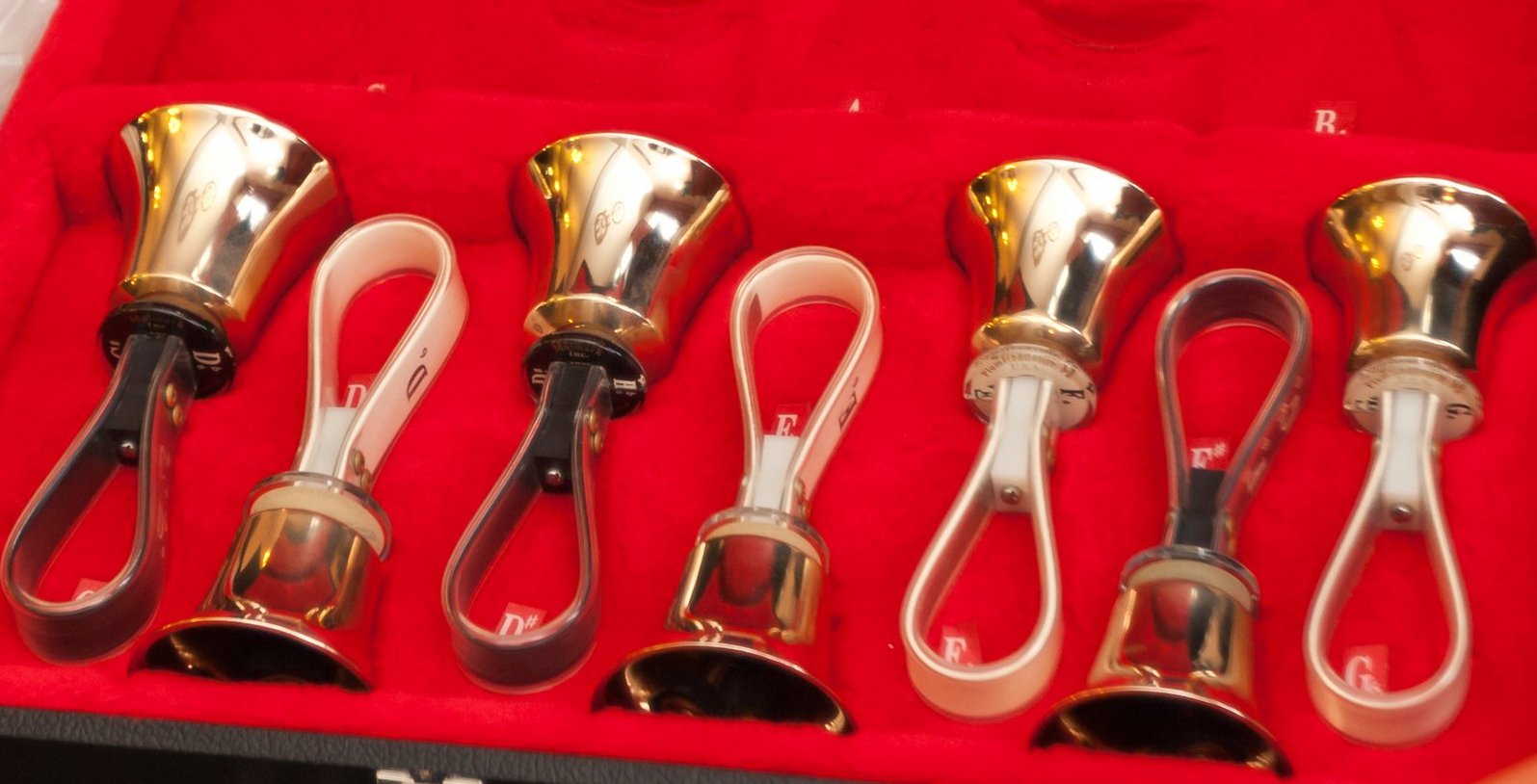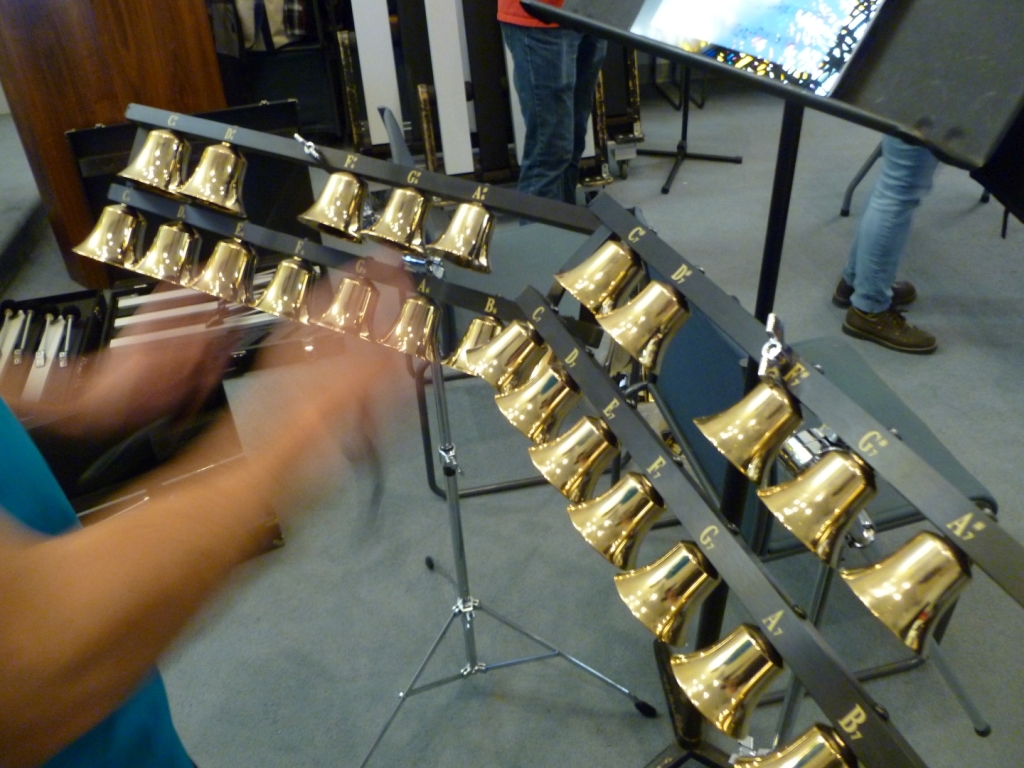
Ensemble
What makes a handbell ensemble unique is how the music is produced. A team of musicians playing many individually tuned handbells creates one instrument. Each musician is responsible for up to twelve individual bells. Each bell has an assigned pitch, much like each key on a piano. The musicians must work together to create a final performance. Musicians use a variety of techniques, including the use of mallets, to create many unique sounds. One handbell cannot create a performance; a cohesive ensemble, however, can perform music with incredible precision and expressive qualities that rival any great musical organization.
Instruments
Malmark Handbells:
The core instrument for Back Bay Ringers is our six and a half octave set of Malmark handbells which combine traditional bronze handbells and Malmark’s unique aluminum bass bells. The bells offer a wide variety of sonorities due to many special techniques developed for the instrument. In addition to ringing, musicians also frequently use mallets on the castings. Musicians may either mallet the bells while they are suspended by the handles, to create a gentle sustained sound, or while the castings are resting on the padded tables, which creates a short, percussive sound. BBR received a generous donation that made the initial purchase of our five and a half octaves of handbells possible.


Malmark Choirchimes:
Choirchimes were invented by Malmark in the late 1970s as an alternative ringing instrument. The hollow aluminum tubes are designed with an external clapper and a slot on the side that resembles a tuning fork. Back Bay Ringers uses a six-octave range of Choirchimes: the largest range currently available. The lower sixth and seventh octave Choirchimes, which are up to 67” long, stand on a specially designed rack and are gently malleted to provide a rich, resonant bass sound.
Choirchimes are an excellent tool for music education, and BBR has proudly donated many two-octave sets to Boston area schools. To learn more about our donation program, visit our Boston Handbell Festival page.
Whitechapel Handbells:
Whitechapel handbells have a significant historical connection with handbell artistry in the United States, and specifically here in Boston. In the 1920s, Beacon Hill resident Margaret Shurcliff was given a ten-bell set of Whitechapel handbells as a gift from the head of the Whitechapel foundry. It was that gift, and Mrs. Shurcliff’s enthusiasm for the instrument, that launched the growth of handbell ringing as a musical art.
Back Bay Ringers received a generous donation of a nearly complete three-octave set of Whitechapel handbells in 2011. We are grateful for this gift and we enjoy utilizing these bells in our programs. For us, these bells represent a wonderful connection to the local history of the art form. Thanks to a successful fundraising effort, BBR was able to complete the three octave set, and send the bells off to the Whitechapel foundry for a complete restoration.


Malmark Cymbells:
Originally designed with studio musicians in mind, Cymbells consist of Malmark handbell castings, mounted on a rack, played by mallets. Back Bay Ringers use our two octaves of cymbells to add a unique timbre, highlight melodies or perform descant style accompaniments.
Auxiliary Percussion:
Handbell composers frequently add other percussion instruments to arrangements, expanding the sonorities created by the handbell ensemble. BBR’s collection continues to expand and currently includes chime-tree (commonly called windchimes,) tambourine, triangle, temple blocks, and finger cymbals.
